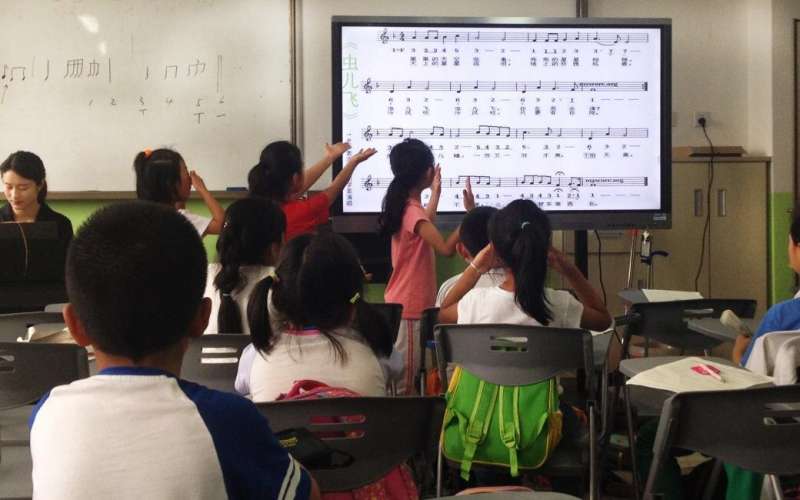
Research has shown that a music-related hobby boosts language skills and affects the processing of speech in the brain. According to a new study, the reverse also happens—learning foreign languages can affect the processing of music in the brain.
Research Director Mari Tervaniemi from the University of Helsinki’s Faculty of Educational Sciences investigated, in cooperation with researchers from the Beijing Normal University (BNU) and the University of Turku, the link in the brain between language acquisition and music processing in Chinese elementary school pupils aged 8–11 by monitoring, for one school year, children who attended a music training program and a similar program for the English language. Brain responses associated with auditory processing were measured in the children before and after the programs. Tervaniemi compared the results to those of children who attended other training programs.
“The results demonstrated that both the music and the language program had an impact on the neural processing of auditory signals,” Tervaniemi says.
Learning achievements extend from language acquisition to music
Surprisingly, attendance in the English training program enhanced the processing of musically relevant sounds, particularly in terms of pitch processing.
“A possible explanation for the finding is the language background of the children, as understanding Chinese, which is a tonal language, is largely based on the perception of pitch, which potentially equipped the study subjects with the ability to utilize precisely that trait when learning new things. That’s why attending the language training program facilitated the early neural auditory processes more than the musical training.”
Tervaniemi says that the results support the notion that musical and linguistic brain functions are closely linked in the developing brain. Both music and language acquisition modulate auditory perception. However, whether they produce similar or different results in the developing brain of school-age children has not been systematically investigated in prior studies.
At the beginning of the training programs, the number of children studied using electroencephalogram (EEG) recordings was 120, of whom more than 80 also took part in EEG recordings a year later, after the program.
In the music training, the children had the opportunity to sing a lot: they were taught to sing from both hand signs and sheet music. The language training program emphasized the combination of spoken and written English, that is, simultaneous learning. At the same time, the English language employs an orthography that is different from Chinese. The one-hour program sessions were held twice a week after school on school premises throughout the school year, with roughly 20 children and two teachers attending at a time.
“In both programs the children liked the content of the lessons which was very interactive and had many means to support communication between the children and the teacher,” says Professor Sha Tao who led the study in Beijing.
Mari Peltonen, University of Helsinki

